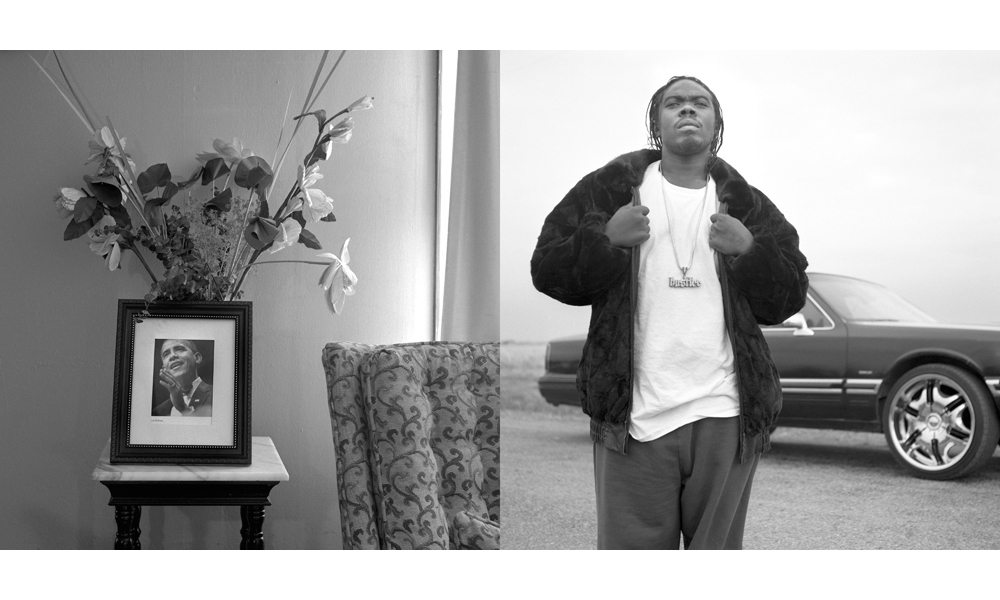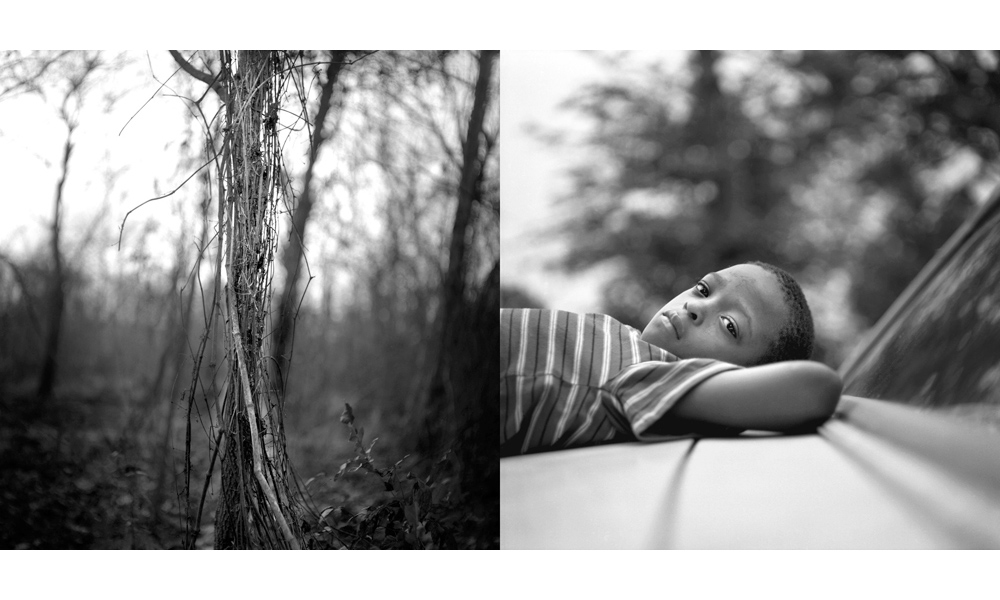Where are you from?
I was born in Port Arthur, but we moved to Beaumont when my mom remarried. That’s where I’m from but I freelance in Dallas now. I moved out of Beaumont in 2004 to go to the University of North Texas.
What’s your degree in?
Photojournalism and International Development
Tell me about working at The Orange (Texas) Leader.
It was a little 8,000-circulation paper back in 2002 and I did that for two years.
How did you get your start there?
My mom had saved up a small college fund for me. After I finished my chemotherapy at 18 I ended up messing around in college my first semester at Stephen F. Austin (a college in Nacodoches, Texas) and came home with a 1.0 and went to Lamar for two years (a college in Beaumont, Texas), but I still wasn’t really figuring anything out. So I took what little bit of college money I had left, worked two jobs, and saved up enough to spend three months backpacking Europe.
How did your experience in Europe change you?
The thing about Europe was that it was really the first time I was truly on my own. I’d been sick since birth and the cancer only magnified my somewhat sheltered experience growing up. When I left to backpack I was suddenly forced to rely solely upon myself. Build relationships with strangers, monitor my cash, develop a budget and suffer the repercussions of not sticking to it. I’d found myself in churches a lot of the time too and developed a stronger spiritual life.

How did you hook up your first staff photographer position at the Orange (Texas) Leader?
I was shooting this Bridge City [football] game and the editor of the Orange Leader saw me out there and asked, “hey, do you want a job? There’s a Lion’s Club carnival tomorrow. Do you want to go shoot that and that’ll be your trial run?” I woke up the next morning and went and shot the Lion’s Club carnival and got a bulldog page on Sunday morning. I worked for them for two years for something like $6.25 an hour.
When I returned from Europe I had had this sense of adventure under my belt and a stronger belief in myself. When I got the job for the Orange Leader, shooting daily assignments, a lot of that experience I’d learned in Europe about socializing with a variety of people and stepping out of a comfort zone was utilized in a constructive way. I used to think that that first job for the small daily was not only a continuation exploring daily life but it was also a boot camp of sorts photographically. I’d talk with classmates at Lamar about the nature of the business and say how much I enjoyed the variety of experience. How I could be at a kindergarten classroom at nine, a homicide having lunch with the sheriffs department at noon and a basketball game by 730. It was all really exciting for me at that time in my life.
You mentioned chemotherapy earlier. Can you talk about that?
I had lymphoma from age 15 to age 18.
Did the experience influence your work in any way?
Not immediately, no I think it took a while. About the same time I got my driver’s license is about the same time I found out that I was sick and I was already the confused teenager anyway and so once I got a car I would just go wander off around Beaumont. Just cruise around town until sundown. This is before I did photography. I’ve always had this drive to get out and cruise around and explore and meet people.
You are a former Dallas Morning News photo intern. How did that come about?
The Morning News had me intern with them in ’05. Chris Wilkins called me and asked me if I wanted to do an internship and I said let me check my fall schedule for school and (Dallas Morning News photojournalist) Mona Reeder called me back immediately and she said “What the hell do you think you’re doing? You just say yes to stuff like that. Don’t worry about school right now.” So I called Chris back immediately and said I’ll take it. That’s how I started to [later] begin freelancing for them. After college, I just naturally went into freelancing full time.
We all went through this cusp, this in-between, where you and I both have a photojournalism degree but the NPPA job bank didn’t necessarily have anything in it. Freelancing bridged the gap.
You and me both met at the Eddie Adams Workshop.
Yeah, we both had Bill Frakes.
What did you draw from that experience?
That I went too early. I couldn’t even tone my images properly back then. There were some other people there that had a portfolio and had a really good experience for networking and having an actual dialogue about work. But for someone [who] hadn’t even finished college yet it was a bit premature I think. It was more of the experience of meeting other people. It was more about the social interaction and getting a taste of what professionals do.
Talk about what you’re working on now.
For the past three years, I’ve been working in the Mississippi Delta. I started that in 2009. In between freelancing in Dallas. I go back as much as I can.
Where is “there”?
A network of about five communities in northwest Mississippi. I’ve been abstractly documenting daily life in the delta. I went there just to find myself at first, I wasn’t looking for a story. I was looking for something better than me, stronger than me. It ended up being this time to just speak with people and get back into a project and begin shooting for something that I wanted to shoot. It’s since grown into something beyond me. It’s grown into something that’s about other people. It’s about strength, and humility and pride, hope and religion and faith.
Tell me about your decision to use medium format, black and white film for your project in Mississippi.
The only reason I started shooting that was because I had a brand new camera, a 1973 Mamiya C330. I’d just got it and thought I’d take it for a spin, so to speak.
At Lamar, I was trained in black and white photography in the darkroom and I guess I wanted to go back to something familiar. But I ended up finding this new thing; it was like a turning point in vision. I began finding something that’s mine in a way. Merging documentary traits with a more artful background.
Who was your teacher?
Keith Carter.
You’ve told me before that you bring a bicycle with you when you go to Mississippi.
Looking back, I think using my bicycle was a perfect compromise. I could cover more ground than walking but yet still be connected more so than if I had confined myself in a car. I liked the idea of using a bicycle because it allowed accessibility. Naturally, a lot of people were just curious about what the hell this little dude with big glasses was doing riding his bicycle with this weird-looking camera. It was like an automatic attention-grabber. Conversation-starter. But a big smile and a wave goes a long way.
What plans do you have for the Mississippi work?
I think it’ll naturally fall into book form. I’m going to have my first solo show in Portland, Oregon at the Newspace Center for Photography. It’ll open June 7, 2013.
[With this show], I can begin playing with the images in a new way. I’m interested in seeing the relationships the images will take on with one another. It’s different from the experience of a book or website presentation and raises all sorts of questions, but I’m really excited to begin the process.
What’s been the reaction to your photos by the people you’ve photographed for the project?
It’s humbling. They take a lot of pride in them. One of the families that I photograph told me once that, “when you bring back photographs of us, you give us joy.” And when I stay the night at their homes I find their portraits hanging in their bedrooms.
Building relationships be it in my daily work or personal projects has always been important to me. The experience and journey I guess you could say has always rode shotgun alongside the desire to tell a good story.
In terms of this new project in Mississippi I’ve been working on I think this is where I’m really beginning to not only explore a new visual aesthetic and way of developing my narratives, but I’m also relying on myphotojournalism background to search out my characters and choose my topics.
You don’t typically light your portraits. Why is that?
I can light a portrait, and I keep a reflector in the bag, but I tend not to overcomplicate things. It’s already a puzzle. I can appreciate exploring for natural light in an environment. Sometimes lights are just another damn thing that needs a battery or plug.
Sometimes lights are just another damn thing that needs a battery or plug.
Who was an early photographic influence on you?
The first guy I fell in love with was German portrait photographer August Sander. I was intrigued by his work ethic, being able to catalog so much work. It was scientific. And if [your images] make a government want to burn your book you know you’re doing something right. But most intriguing was his ability to communicate effectively with people on all levels of society. That speaks a lot to me.
What’s the most interesting thing in your camera bag?
I have this, uh, I don’t even know how old it is. I have this crushed granola bar. I just pulled it out to check my luggage at the airport this morning and I asked the guy if it was all right if it was in there. Chocolate chip.
How long has it been in there?
At the very least, months.
What’s your favorite Texas barbecue?
Actually me and the lady, we make these short ribs in the oven and she makes a Dr. Pepper sauce and we smother that thing in that.
You don’t have to travel around the world to find interesting subjects…sometimes you can find the whole world in your own backyard.
Any parting thoughts?
I think the most important thing I’ve realized over the past few years is that you don’t have to travel around the world to find interesting subjects. You can of course, but sometimes you can find the whole world in your own backyard.




















